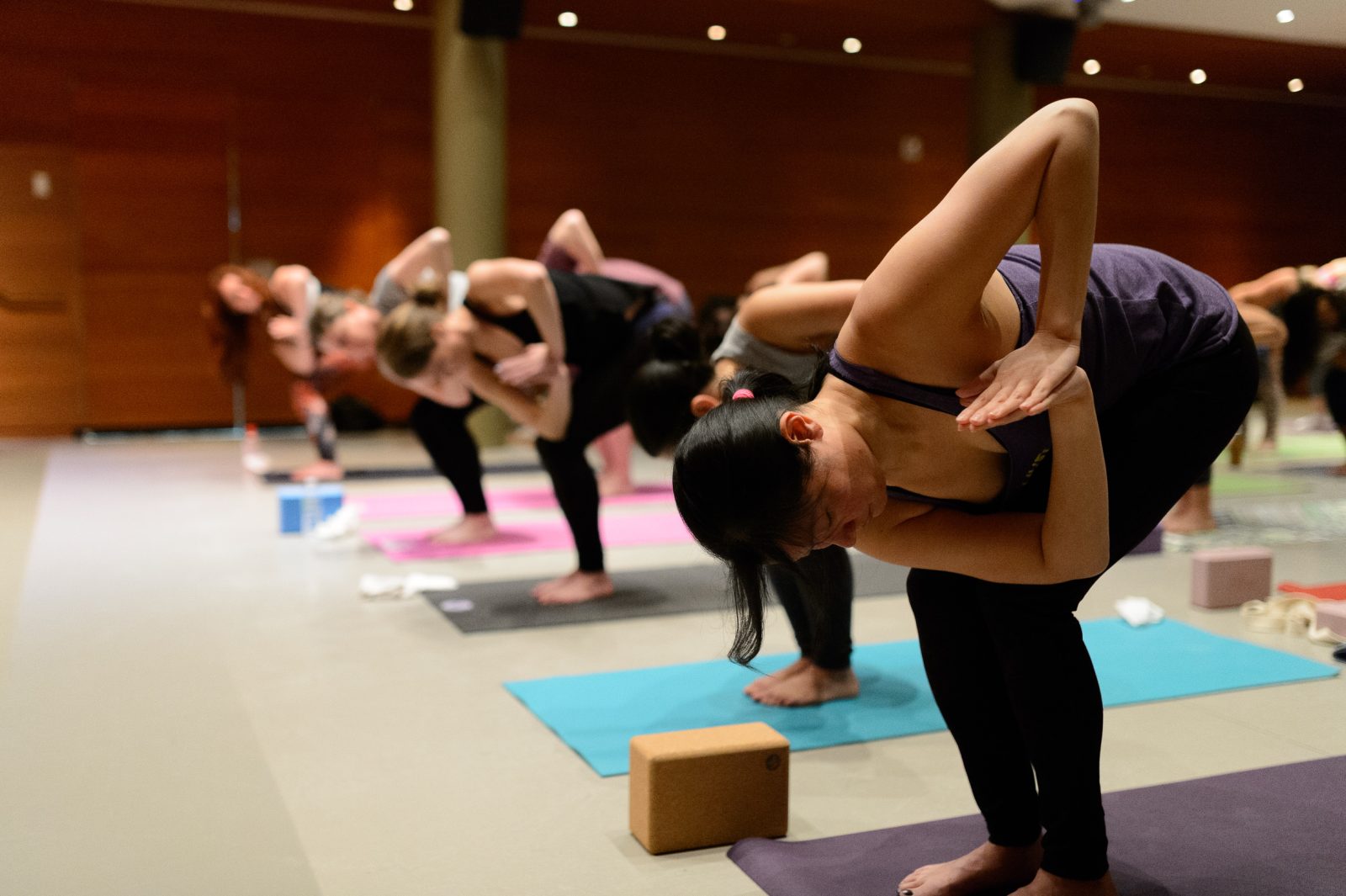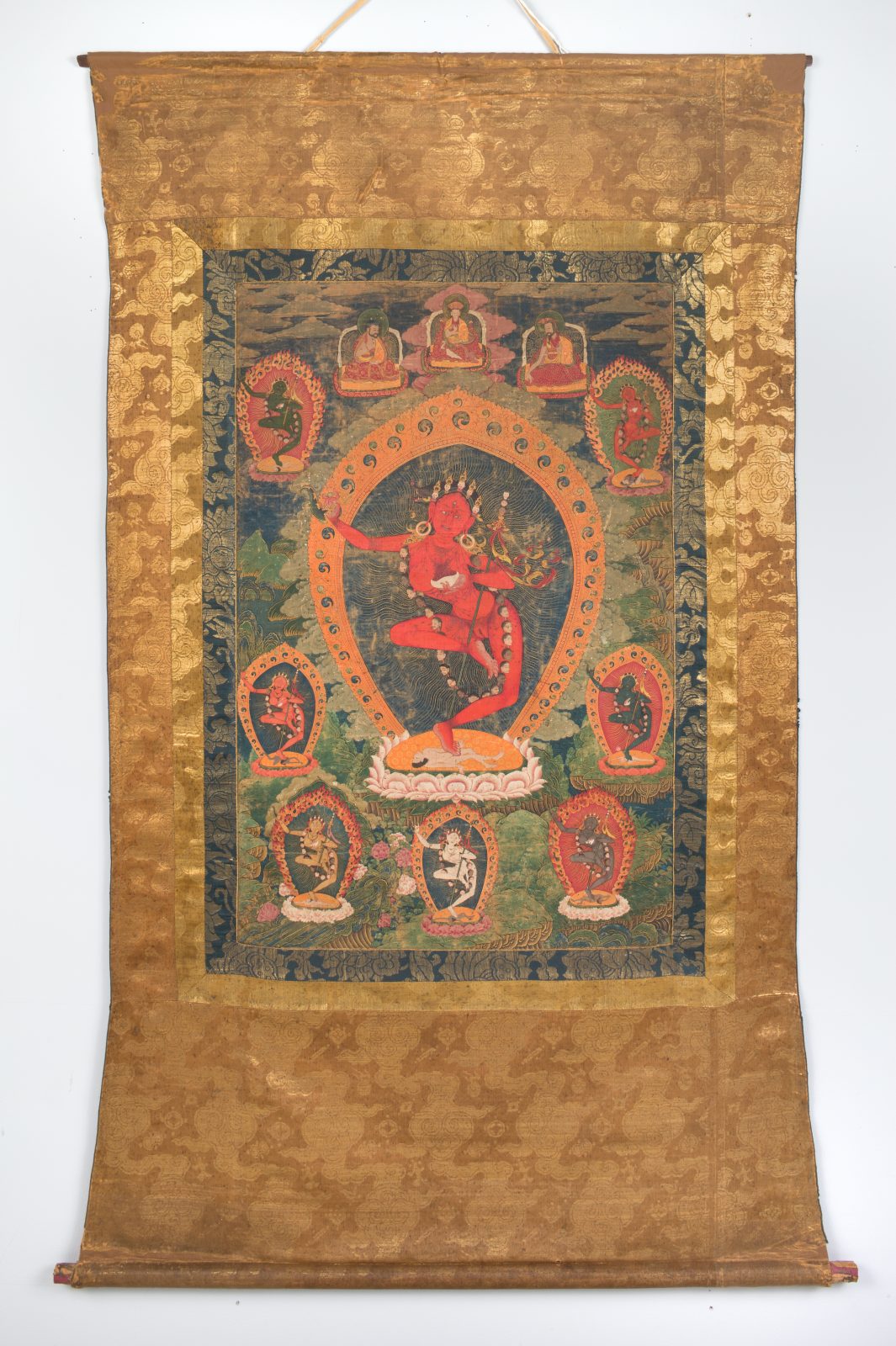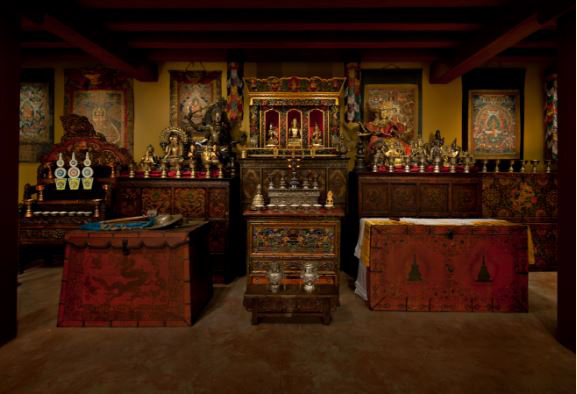
Photograph by Filip Wolak

Photograph by Filip Wolak
Yoga is an ancient physical, mental, and spiritual practice that originated in India. The word yoga is derived from Sanskrit and means “to join” or “to unite,” symbolizing the union of body and mind. The art objects in the Rubin’s collection, intended for ritual and aesthetic purposes, are closely related to yoga.
Yoga is a rich and varied system of philosophy and practice that seeks to help people align the body and the mind. One translation of yoga, originally a Sanskrit term, is “yoke.” The idea is that the techniques of yoga connect the body and mind in order to transform personal experience, just as a yoke connects an ox to a plough in order to help a farmer cultivate a field of rice or barley.
Likewise the art objects in the Rubin Museum’s collection, which are intended for ritual purposes as well as aesthetic ones, help practitioners connect the material and spiritual sides of life. The paintings, sculptures, and other art objects are used in ritual and meditative practices that seek to link the worldly and the transcendent, just as a yoga pose or breathing exercise can lead to a transcendent moment. Just as the breathing exercises and physical postures we do in yoga class aim to bring together our physical, mental, and spiritual selves, art can also remind us of the connections between material and spiritual experiences.

Black Jambhala; Tibet; 18th century; Copper alloy with pigments; Rubin Museum of Art C2001.10.3
The many philosophies, breathing exercises, meditation techniques, and physical postures of yoga are based on Indian practices, some ancient and some modern. The art on display at the Rubin Museum—largely associated with Tibetan Buddhism—also has roots in India. In fact all of the major traditions of Buddhism originated in India.

Vajravarahi; Bhutan, possibly Punakha Dzong; Mid-19th century; Pigments on cloth; Rubin Museum of Himalayan Art; C2009.18
The physical postures we think of when we hear the term “yoga” are part of a relatively new system of yogic practice, taking shape early in the 20th century. Although it is based in ancient practices and traditions, yoga is a much broader system of philosophies and practices than meets the eye. Over the centuries it has developed and changed, coming to include countless techniques to focus the mind and train the body.
Tibetan Buddhist art, philosophy, and ritual have also changed and adapted countless times in different times and places. Certain core values of yoga and Buddhism have remained consistent, but both systems share the great asset of fluidly adapting to the needs and interests of a changing world.
Many of us go to yoga class seeking to move beyond our habitual way of thinking, breathing, sitting, and moving. Yoga practice can be a rare opportunity to use breathing and physical techniques to focus the mind, which is so often engaged with the countless details of everyday life. Beyond physical benefits, yoga postures also offer a valuable chance to transcend our mundane experiences.
In the same way, the concepts and practices reflected in the art at the Rubin Museum invite us to step away from the daily grind and reflect on a bigger picture. The Museum’s Tibetan Buddhist Shrine Room allows visitors to experience objects from the collection in their cultural context while simultaneously providing a space for personal contemplation and mental relaxation.

Get the latest news and stories from the Rubin, plus occasional information on how to support our work.